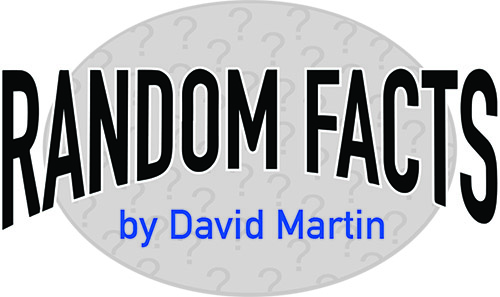By David Martin —
When we opened our internet tubes this week, all kinds of fun and enticing names came out. It took us a moment to figure out they were names of lipsticks.
Historians say that ancient Sumerians were the first to wear lipstick some 5,000 years ago, but undoubtedly women were coloring their lips all the way back to the cave days. A cavewoman might have noticed that whenever she ate red berries and got the juice all over her lips, the cavemen would look at her and say, in cavepeople talk, the equivalent of “hubba-hubba.”
In 2018, the global lipstick market was valued at $11.5 billion, accounting for nearly 900 million lipsticks. To get the exact shade of red to mesmerize Roman emperors, Cleopatra would crush carmine beetles and ants into a mixture with beeswax. Today, most lipsticks have three basic ingredients: wax, oil, and pigment. Wax makes the lipstick spreadable while oils such as lanolin or cocoa butter provide moisture. And pigment, of course, is the color — what made cavemen grunt hubba-hubba and enticed Caesar and Mark Antony to go gaga.
At various points in history, only prostitutes wore red lipstick or, in some cases, were forced to wear red lipstick to signify their status. In prudish 1770 England, lipstick and other cosmetics could make a woman persona non grata. One law said a woman who used cosmetics to seduce a man into matrimony could be tried for witchcraft.
But with actresses and feminists declaring their independence by wearing red lipstick, the practice spread so widely that by the 1950s more women in America were regularly wearing red lipstick than were regularly brushing their teeth. Women in the suffrage movement wore red lipstick to public events to shock men and bring attention to their cause. Rachel Felder, who wrote a book about lipstick and feminism, said red lipstick became the symbol of feminism, “ … because it’s not just powerful, it’s female.”
An academic paper written by Debra Merskin and published in 2007, offered this mouthful regarding lipstick names: “The findings show, beyond simple color names, that most of the lipsticks are named after food, beverages, sex, and romance … Understanding how meaning is constructed through lipstick naming is an important step toward apprehending the role of cosmetics in conflating femininity, self-esteem, and body image with the goals of patriarchal hegemony.”
Or, as a patriarch might say, lipstick names are fun: Red Abandon, Tomboy No More, Little Red Wagon, Jungle Red, Crimson and Clover, Ruby Woo (unofficial lipstick of the 2016 Women’s March), Russian Red, Reddy Set Go, Forbidden Apple, Unicorn Blood, Chilled Brandy.
And if a woman needs a reason beyond suffrage and sex appeal for wearing red lipstick, she might consider this: Adolf Hitler absolutely despised red lipstick.



